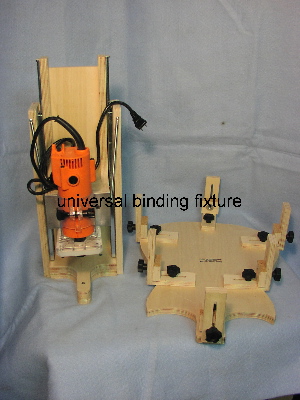Any good binding system uses the sides to square to and the top or back contact is nothing but a height plane that the base rides on. you can get Teflon donuts at Wally World that are use in nitting and glue one on the base. they are about 1-1/2" od x 1" id these work well for the ledge on the router base. Small enough not to be an issue with the dome slope. Trying to use this hand held is near impossible as the surface area of the base is now so small that it is hard to keep level, but on a floating base with a pilot guide indexing to the side in workse well. I use Johns Halls binding fixture

I addapted mine for a PC 7310 and added an adjustable pilot guide for setting the cut depth.


